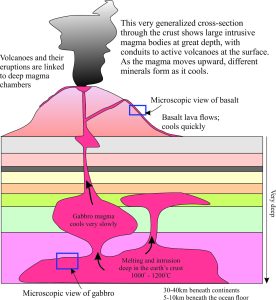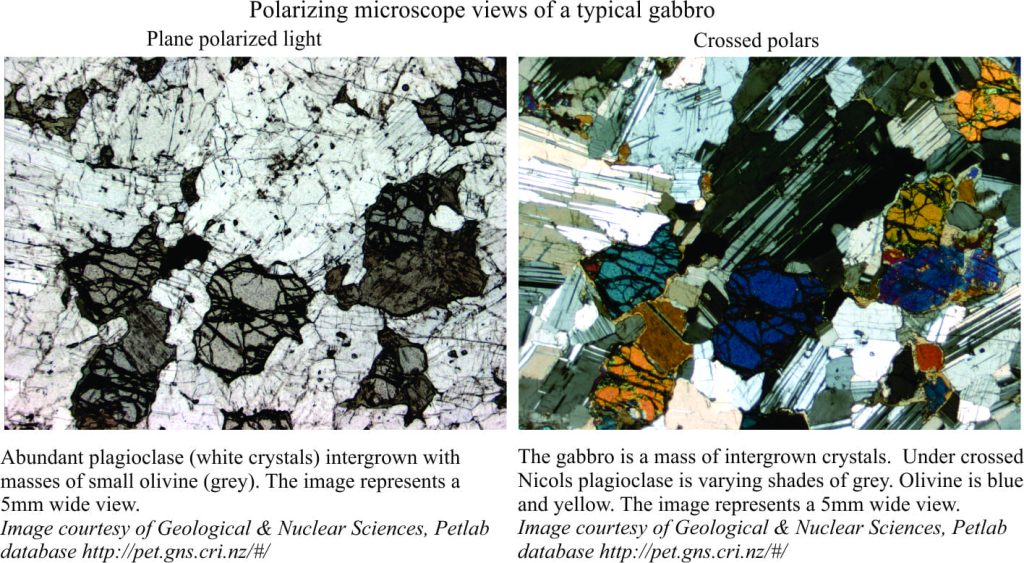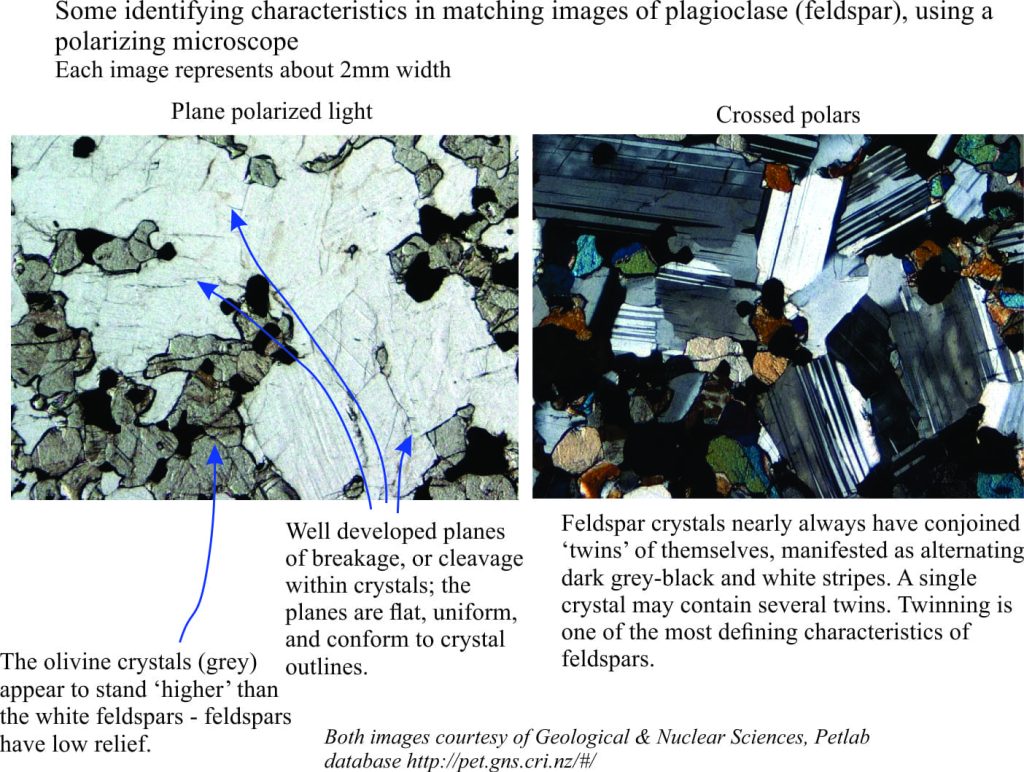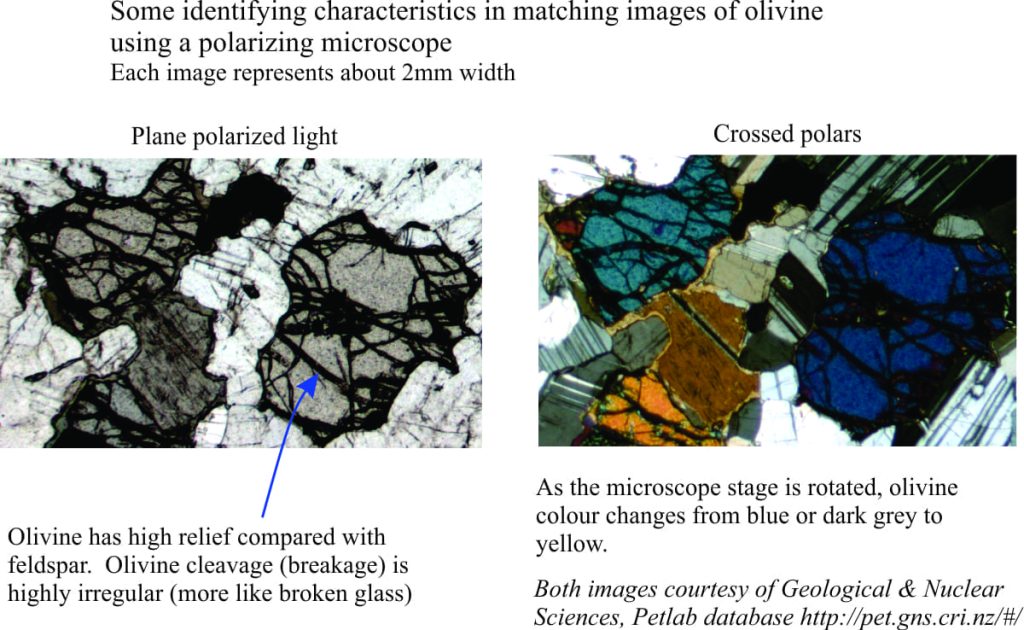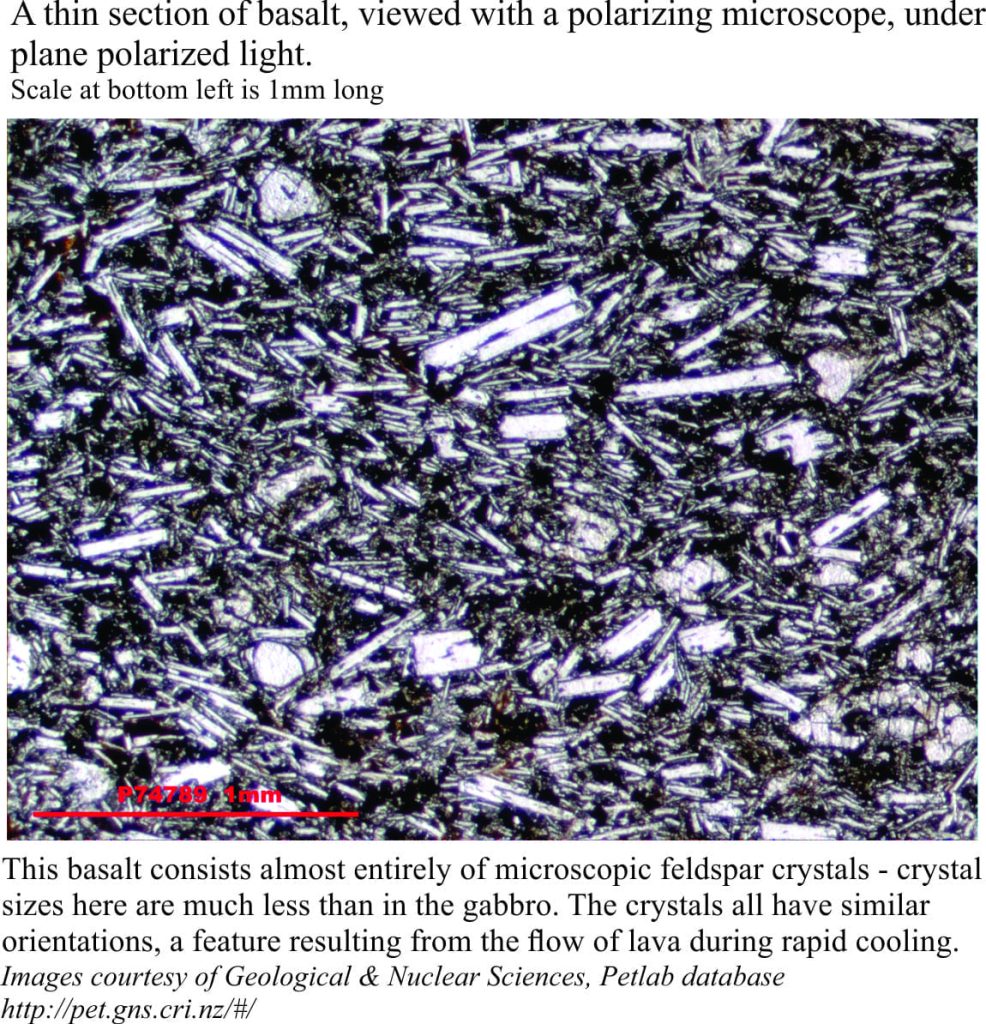This is the second in a series on the geological world under a microscope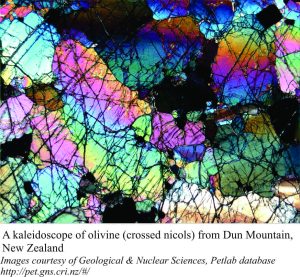
Geologists, it seems, are never satisfied with just looking at rocks from a distance; there is some innate need to wield their pointy geological hammer. Break that rock; give it a good bash! To the uninitiated, this may seem a bit pugilistic, a kind of primal wonton destruction. But a good geo won’t hit rocks just for the hell-of it; a good Geo will be selective. Most of my field assistants and post-graduate candidates needed to be reminded of this. Find something of interest? Before you do anything else, sketch and photograph it; no one will be interested in looking at photos of rubble.
Looking ‘inside’ rocks serves a unique purpose; it allows you to travel back in time, to picture the ancient world, ancient events, outcomes of processes that involve the benign and the brutal, terrifyingly beautiful. Rocks contain memories of all these. And that is why we sometimes break them apart. The optical, or polarizing microscope allows us to unlock these rock memories in a uniquely visual way.
Behind the kaleidoscopic, psychedelic images lies a wealth of information about how rocks form. Igneous rocks commonly present stunning visual images when viewed with a polarizing microscope, so I will use two examples of these to illustrate some basic mineral identification, and how we might interpret rock history.
Magmas usually form by melting of rock, deep in the earth’s crust and mantle (commonly 10s of kilometres). Magma is more buoyant than rock and will tend to rise through the crust, cooling as it does so. These large, viscous globs have dimensions measured in kilometres. If they solidify deep within the crust, they are referred to as intrusions. However, some magma leakage can also propel the melt towards the surface; if it breaches the surface it becomes a volcanic eruption.
One of the more interesting facets of melting or solidifying rock, is that neither process occurs all at once. Rocks are composed of several kinds of minerals, and each mineral has a specific melting or solidifying temperature. One of the first minerals to crystallize from magma is olivine (from about 1300o to 1200oC). Feldspar, the most common rock-forming mineral, begins to form below temperatures of about 1000oC, and one of the last to appear, quartz at about 800oC. This succession of mineral formation in a cooling magma is known as the Bowen Reaction Series, after the early 20th Century geologist Norman Bowen, a discovery that revolutionized the way we think about how igneous rocks form.
Basalt is one of the more familiar volcanic rocks. It is the lava involved in spectacular fire fountain eruptions and lava flows in many places around the world; Hawaii is a great example. Basalt is the offspring of its parent magma, gabbro; gabbro is the dominant rock type beneath the ocean floor. It forms deep in the earth’s crust. Both rock types have similar chemical composition, but quite different appearance.
The images here show some of the features of gabbro and basalt as seen under a polarizing microscope. Both contain lots of feldspar (a variety called plagioclase), but crystals making up the basalt tend to be small (in this example less than 0.5mm) because the magma cooled rapidly (minutes, hours) once it had reached shallow depths and was erupted. Gabbro on the other hand commonly has crystals measured in centimetres; gabbro is an intrusive rock, surrounded and blanketed by other rocks in the crust, which means it cools very slowly (many 1000s of years).
Unlike basalt, we can never witness gabbro forming – it is too deep and too hot. But we can think of a basalt eruption as a proxy for gabbro magma – somewhere, deep below the volcano, there must be a gabbro magma. However, once the magma has cooled and solidified, tectonic processes can, over the eons, transport the rock mass towards the surface. Erosion, working hand in hand with tectonic uplift, gradually exposes remnants of the original intrusive gabbro mass. We can now sample the gabbro (and any other rocks that have arrived at the surface), study its mineral content, chemistry, and determine its age. Armed with this data, we can work backwards in time to figure out where, when, and how the rock and its original magma formed.
For geologists, rocks are the record of past earth events. We can look at the ‘inside’ of any rock or mineral, and try to figure out its history. This is not just a useful academic exercise – the forces and processes that have shaped our earth over the last 4.6 billion years are still active, still shaping, something we witness daily, at times with disastrous consequences. We cannot prevent any of these events, but the accumulated knowledge of the rock record will help us to predict and mitigate them.
